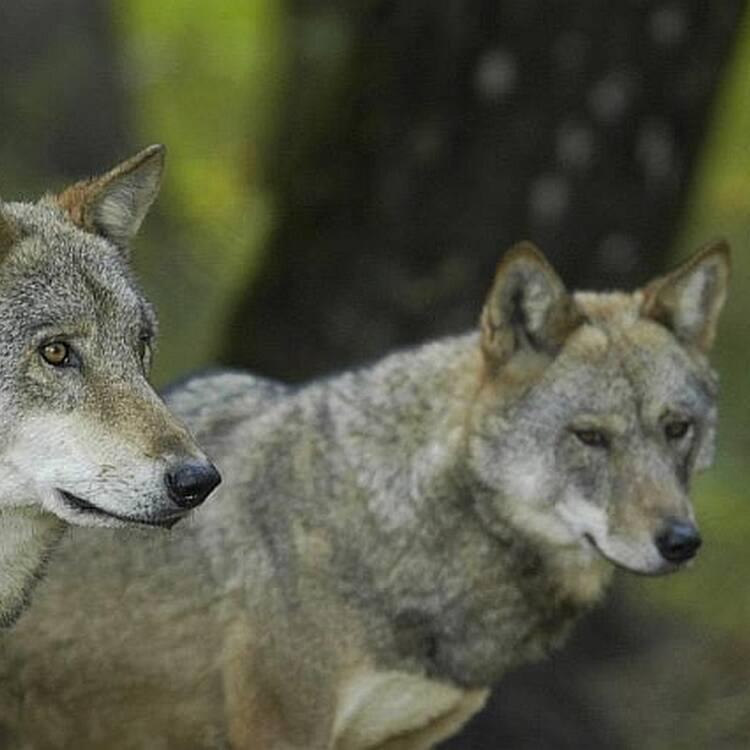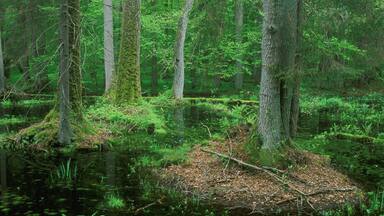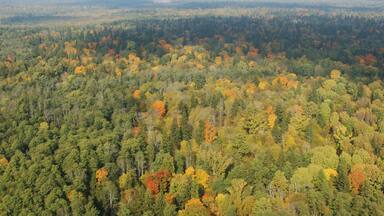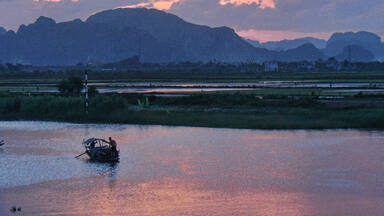Białowieża Forest
Białowieża Forest
The Białowieża Forest World Heritage site, on the border between Poland and Belarus, is an immense range of primary forest including both conifers and broadleaved trees covering a total area of 141,885 hectares. Situated on the watershed of the Baltic Sea and Black Sea, this transboundary property is exceptional for the opportunities it offers for biodiversity conservation. It is home to the largest population of the property’s iconic species, the European bison.
Description is available under license CC-BY-SA IGO 3.0
Forêt Bialowieza
Le site du patrimoine mondial de la Forêt Bialowieża, sur la frontière entre la Pologne et la Bélarusse, est un vaste massif de forêt ancienne comprenant à la fois des conifères et des feuillus d’une superficie totale de 141 885 ha. Situé sur la ligne de partage des eaux entre la mer Baltique et la mer Noire, ce bien transfrontalier apparaît comme une région irremplaçable pour la conservation de la biodiversité. On y trouve la plus grande population de bisons d’Europe, l’espèce emblématique du bien.
Description is available under license CC-BY-SA IGO 3.0
Bosque de Bialowieża
El sitio del patrimonio mundial del Bosque de Bialowieża, situado en la frontera entre Polonia y Belarrús, abarca una vasta extensión de bosques arcaicos de hoja perenne y caduca de una superficie total de 141.885 hectáreas. Situado en la divisoria entre las cuencas de los ríos que van a parar al Báltico y el Mar Negro, este sitio transfronterizo es único en su género para la conservación de la biodiversidad. Alberga la mayor población existente de bisonte europeo, especie animal emblemática de la región.
source: UNESCO/CPE
Description is available under license CC-BY-SA IGO 3.0
ビャウォヴィエジャの森
ヨーロッパバイソンを象徴とした古くから残る森林景観として、1979年にポーランド、1992年にベラルーシで登録されたが、今回、ポーランド側で大規模な拡張が行われ、評価基準が景観の美しさから生物の価値へと変更された。この森林の特徴は、中央ヨーロッパを代表する低地林および周囲の湿地帯等が混在した生態系が人為の影響を受けずに広範囲に残っていること、そこに多くの野生生物が生息・生育していることにある。野生のヨーロッパバイソンの30%以上が生息するほか、動植物ともに野生生物の多様性に富み、特にキノコ類においては顕著である。source: NFUAJ
Bos van Białowieża
Op de waterscheiding van de Oostzee en de Zwarte Zee ligt dit immens grote bos, bestaand uit naald- en loofbomen. Het bos gaat terug tot 8000 voor Christus en is het enige overgebleven voorbeeld van de oorspronkelijke bossen die ooit een groot deel van Europa bedekten. Er staan grenen, beuken, eiken, elzen en sparren. Met een totale oppervlakte van 141.885 hectare is dit grensoverschrijdende gebied uitzonderlijk qua mogelijkheden voor het behoud van biodiversiteit. Het is de thuisbasis van de grootste bevolking van een voor dit gebied iconische soort, de Europese bizon. Er komen ook andere zeldzame zoogdieren voor zoals de wolf, lynx en otter.
Source: unesco.nl
Outstanding Universal Value
Brief synthesis
Bialowieza Forest is a large forest complex located on the border between Poland and Belarus. Thanks to several ages of protection the Forest had survived in its natural state to this day. The Bialowieza National Park, Poland, was inscribed on the World Heritage List in 1979 and extended to include Belovezhskaya Pushcha, Belarus, in 1992. A large extension of the property in 2014 results in a property of 141,885 ha with a buffer zone of 166,708 ha.
This property includes a complex of lowland forests that are characteristics of the Central European mixed forests terrestrial ecoregion. The area has exceptionally conservation significance due to the scale of its old growth forests, which include extensive undisturbed areas where natural processes are on-going. A consequence is the richness in dead wood, standing and on the ground, and consequently a high diversity of fungi and saproxylic invertebrates. The property protects a diverse and rich wildlife of which 59 mammal species, over 250 bird, 13 amphibian, 7 reptile and over 12,000 invertebrate species. The iconic symbol of the property is the European Bison: approximately 900 individuals in the whole property which make almost 25% of the total world’s population and over 30% of free-living animals.
Criterion (ix): Bialowieza Forest conserves a diverse complex of protected forest ecosystems which exemplify the Central European mixed forests terrestrial ecoregion, and a range of associated non-forest habitats, including wet meadows, river valleys and other wetlands. The area has an exceptionally high nature conservation value, including extensive old-growth forests. The large and integral forest area supports complete food webs including viable populations of large mammals and large carnivores (wolf, lynx and otter) amongst other. The richness in dead wood, standing and on the ground, leads to a consequent high diversity of fungi and saproxylic invertebrates. The long tradition of research on the little disturbed forest ecosystem and the numerous publications, including description of new species, also contributes significantly to the values of the nominated property.
Criterion (x): Bialowieza Forest is an irreplaceable area for biodiversity conservation, due in particular to its size, protection status, and substantially undisturbed nature. The property is home to the largest free-roaming population of European Bison, which is the iconic species of this property. However the biodiversity conservation values are extensive, and include protection for 59 mammal species, over 250 bird species, 13 amphibians, 7 reptiles, and over 12,000 invertebrates. The flora is diverse and regionally significant, and the property also is notable for conservation of fungi. Several new species have been described here and many threatened species are still well represented.
Integrity
The property is a large, coherent area conserved via a range of protective designations representing the full range of forest ecosystems of the region, and providing habitat for large mammals. The presence of extensive undisturbed areas is crucial to its nature conservation values. Some of the ecosystems represented in the property (wet meadows, wetlands, river corridors) require maintenance through active management, due to the decrease of water flow and absence of agriculture (hay cutting). The buffer zone that has been proposed by both State Parties appears sufficient to provide effective protection of the integrity of the property from threats from outside its boundaries. There are some connectivity challenges, from barriers inside the property, and its relative isolation within surrounding agricultural landscapes, that require continued management and monitoring.
Protection and management requirements
The property benefits from legal and institutional protection in both States Parties, through a variety of protected area designations.
Protection and management requires strong and effective cooperation between the States Parties, and also between institutions in each State Party. The Bialowieza National Park (Poland), the Polish Forestry Administration and the Belovezhskaya Pushcha National Park authorities have entered into an agreement regarding preparation and implementation of an integrated management plan for the nominated property, and to establish a transboundary steering group. In addition the State Party of Poland has developed an agreement establishing a Steering Committee between the National Park and the Forest Administration aiming to achieve a coordinated approach to integrated management. It is essential to ensure the effective functioning of this Steering Committee, including through regular meetings, and its input to transboundary coordination and management. It is essential that the national parks of both States Parties maintain effective and legally adopted management plans, and an adopted management plan for the Bialowieza National Park (Poland), to support its inclusion in the property, is an essential and long-term requirement.
It is essential to ensure that the integrated management plan for the property addresses all key issues concerning the effective management of this property, particularly forest, meadows and wetlands management, and that it is adequately funded on a long term basis to ensure its effective implementation.
Effective and well-resourced conservation management is the main long-term requirement to secure the property, and maintain the necessary management interventions that sustain its natural values. Threats that require long-term attention via monitoring and continued management programmes include fire management, the impacts of barriers to connectivity, including roads, firebreaks and the border fence. There is also scope to continually improve aspects of the management of the property, including in relation to ensuring connectivity within the property, and in its wider landscape, and to also secure enhanced community engagement.
Links
-
Białowieża National Park
-
Belavezhskaya Puscha (Virtual Guide to Belarus)
-
Bialowieza National Park and Biosphere Reserve (UNESCO MAB Biosphere Reserve)
-
Bialowieski National Park
-
Bialowieza Forest, Poland
-
Belovezhskaya Pushcha National Park
-
Natural site datasheets from WCMC: Belovezhskaya Pushcha National Park (Belarus)
-
Protectedplanet.net




